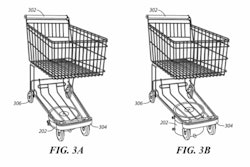Manufacturers face an exciting yet challenging future. Meeting consumer demands for personalization, increasing productivity despite the skills shortage and generating new revenue opportunities are all major strategic issues. Deep, real-time visibility into plant operations and supply chains, the ability to predict plant floor events and anticipate broader trends using existing resources to their fullest capacity are all required capabilities. The Internet of Things (IoT), with its potential to assimilate real-time information through sensory enablement and a growing network of interconnected devices, can equip manufacturers with these capabilities, giving them higher flexibility to respond to changing market dynamics.
Each manufacturer’s IoT strategy will be unique to their specific operating system, their place in the value chain and the customers they serve. Yet all manufacturers should use the following as benchmarks to ensure that their IoT implementations provide the data and business intelligence required to succeed in today’s business environment.
Broad Scope of Instrumentation
Automation has existed for decades in most manufacturing production facilities and warehouses — from barcode readers to robots — and some manufacturers easily track the flow of parts and goods on their shop floors. IoT allows the manufacturers to take their automation to the next level, leveraging information available inside, around and beyond the walls of the plant floors. IoT-driven automation delves deeper and broader, enabling manufacturers to gain granular visibility into their operations. For example, human sensing can play a role in integrating work allocation as well as safety in case of an accident. While human sensing in consumer environments raises privacy concerns, it has tremendous potential in the industrial world.
Accomplishing complete tracking of operations requires manufacturers to deploy more sensors throughout their facilities, including material handling equipment, capturing multitudes of equipment performance parameters in real-time and data about ambient conditions such as temperature, humidity and air quality. This information set, correlated with the workstation data gathered through the Manufacturing Execution System, provides core level visibility and impact of conditions on overall plant performance. Other systems and devices that affect plant performance also need to be instrumented, from maintenance equipment to drones, robots and automated unmanned vehicles that supply production lines.
All of this data ingested by the IoT feeds the next vital part of the IoT architecture: analytics.
Advanced Predictive Analytics
Reports and dashboards do not necessarily provide knowledge. Predictive analytics, an essential element of IoT programs, enable manufacturers to have real-time visibility and insights, as well as to develop data-driven foresight.
Predictive analytics provide a multifaceted, multidimensional analysis of all the data generated and ingested by the IoT. By analyzing real-time data, analytics can predict problems before they occur. The algorithms can recognize signs of an overheating microchip and predict this will cause a robotic arm to delay its action by five milliseconds, creating havoc and waste on the line. Armed with this foreknowledge, technicians can correct the issue quickly. For example, in a food manufacturing plant, packaging machines are at the end of the production line. Sensor-enabling the packaging machine facilitates the prediction of overheated platens (which make the food non-consumable), thereby reducing wastage that runs to several million dollars per plant each year while helping to avoid/minimize line stoppage.
Predicting likely events can also create supply chain transparency. In the above example, use of packaging materials can be tracked by the manufacturer and supplier in real-time, to predict depletion rates and when to replenish the stock of materials. Detailed insight about how a supplier delay will affect operations across a network of plants, can help a manufacturer adjust production levels and coordinate with other suppliers to minimize the impact of the shortage.
Expanded Data Storage Capacity
Getting maximum benefit from predictive analytics will require most manufacturers to store more data and for longer periods than before. The reason: more data means smarter algorithms. Analytics tools can analyze and correlate cause and effect among historic product, yield, utilization, quality, inventory, environmental, health and safety dimensions to go far beyond simple root cause analysis to reveal subtle patterns that affect performance.
Integration of Semantic Data
Executives, managers, supervisors, associates, suppliers, etc. generate multiple types of semantic data, from email exchanges to calendars and issues tagged on in-house social media. This semantic data must be integrated with manufacturing system and machine-created data to create a truly comprehensive view of plant operations. Analytics tools can correlate semantic data with machine data to create a richer context for identifying patterns and root causes accurately.
Closed Loop Between Operations and IT
Foresight is wasted if not acted on. Manufacturers must close the loop between IoT insights and predictions and plant control functions. When the IoT reports that the robotic arm is overheating, it may trigger an automatic line shut down, as well as dispatch an order to a repair technician. Achieving these seamless interactions requires careful orchestration between IT and IoT.
High Performance Computing Powers Real-Time Intelligence
Applying business rules, identifying exceptions and taking corrective measures in near real-time to maintain optimal operating conditions requires powerful high performance computing, or parallel processing, of vast volumes of machine and semantic data. Keeping all systems and their data synchronized while delivering insights to multiple stakeholders and systems, makes this computing paradigm a necessity.
Open Yet Secure
Sharing predictive knowledge gleaned from the IoT can create additional value, whether integrated with a plant manager’s mobile device or supplier and customer systems. Today’s public cloud solutions enable manufacturers to share data in controlled, secure fashion with robust security measures, from encryption to identity management.
Acting on the IoT
While IoT and its components can drive automated responses, manufacturers will derive greater value by using IoT to drive business strategy and innovation. Manufacturers not only need to benchmark against the practices above but also must be creative in augmenting and accelerating their IoT programs. These programs will help organizations build capabilities to meet the challenges in markets and fulfill consumer preferences that are driving different imperatives for manufacturers.
Rajaram Radhakrishnan is Vice President & Head of Manufacturing and Logistics at Cognizant; Prasad Satyavolu is Head of Innovation for Manufacturing and Logistics at Cognizant.























